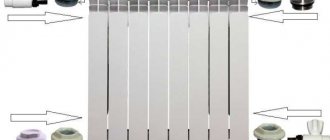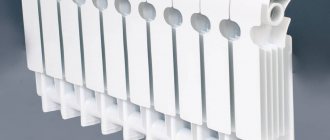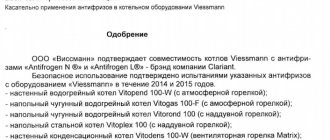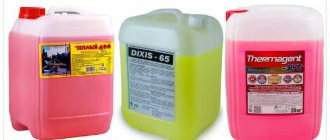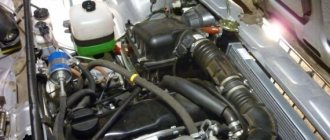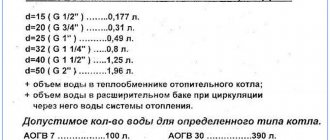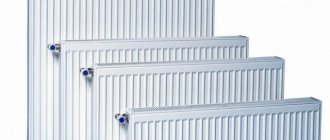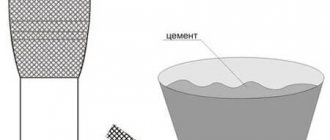Today, the antifreeze market for car radiators is filled with products based on ethylene glycol. This substance has a number of positive qualities during operation. The correct choice of product for the cooling system determines its durability, as well as the operation of the engine.
Ethylene glycol-based antifreeze has a low freezing point, which depends on the concentration of the substance. The liquid inside the cooling system begins to crystallize in the range from 0 to -70ºС. When choosing high-quality antifreeze, it is necessary to take into account the operating conditions of the machine. In summer, it should cool the engine as efficiently as possible. In winter, the liquid should not freeze even in severe frosts.
Types of antifreeze
Today there are two main types of antifreeze - carbosilicate and silicate substances. The second type is used in older cars. The most famous representative of this class of products is antifreeze. Silicate antifreezes have a number of disadvantages, so they are not used for foreign cars.
Silicate-free antifreeze based on ethylene glycol is preferable for foreign new cars. During vehicle operation, the additives that make up the product settle exclusively in areas where corrosion forms. This became possible thanks to the inclusion of organic components in the product. In this case, the engine is completely cooled.
Silicate varieties, made from ethylene glycol, coat the entire inner surface of the tubes with inorganic components. They effectively prevent the formation of corrosion, but at the same time reduce the cooling capacity of the system.
Types of antifreeze
All antifreezes differ from each other in two parameters - composition and added additives. As a result of this distribution, the following compositions can be distinguished:
- glycerin The products are completely harmless and non-toxic. They dissolve well and have a long service life. The product does not form harmful deposits;
- ethylene glycol. This foundation requires special caution on the part of users as it may be toxic. The cost of the substance is low. The composition can be used in heating circuits;
- propylene glycol. Such substances are very expensive, but also completely harmless. Suitable for long periods of operation and completely prevent the formation of precipitation.
For aluminum motors, it is worth choosing the safest and most harmless compounds. This is due to the fact that toxic antifreeze can begin to corrode thin metal.
Antifreeze composition
Ethylene glycol-based antifreezes have a specific composition. Their main characteristics depend on this. In its pure form, ethylene glycol looks like an oily substance. Its freezing point is -13ºС, and its boiling point is +197ºС. This substance is quite dense. Ethylene glycol is a strong food poison. This substance is toxic, especially after its resource has been exhausted. Waste antifreeze based on ethylene glycol, the composition of which was contaminated during operation with heavy metals, requires proper disposal.
When mixed with water, the freezing point can be significantly reduced (down to -70ºC with a 1:2 ratio of water and ethylene glycol). Organic and inorganic components can be used as additives. The first option is preferable. Corrosion inhibitors today come in 4 types: carboxylate, traditional, organic and hybrid. Due to the difference in the components that make up antifreeze, you cannot mix different brands of these products. Otherwise, they will conflict with each other, reducing the effectiveness of the substance.
Antifreeze based on ethyl alcohol
You can make your own radiator mixture. To do this you will need: distilled water and 40% ethyl alcohol.
To use antifreeze in a heating system, it is not always possible to fill in ready-made commercial mixtures. In this case, you can use a coolant that can be easily prepared with your own hands. you ask how is this possible? Everything is very simple, this coolant is a non-freezing mixture of distilled water and forty percent ethyl alcohol. Such antifreeze, prepared with your own hands for the heating system, has the following characteristics:
- the viscosity of the liquid is slightly higher than that of water, but much lower than that of commercial antifreeze;
- fluidity is less than antifreeze, which makes it possible to somewhat reduce the requirements for the tightness of circuit connections. Rubber seals are not damaged when using this particular liquid;
- Alcohol-based mixtures have another advantage, making them an excellent choice for metal radiators. The fact is that alcohol prevents the development of corrosion, and this is important for systems whose destruction can lead to a variety of troubles;
- in this case, it is recommended to use hard water for the heating system, which, together with alcohol, prevents the formation of scale on the internal surfaces. The sediment is formed in solid form; during preventive flushing it is very easily removed from the system;
- when the alcohol content in the mixture is 30 percent or more, it does not evaporate separately;
- The boiling point of the alcohol coolant is approximately equal to the value for ordinary water. That is, when the temperature rises to 85 degrees Celsius, it does not boil with the formation of large masses of steam;
- alcohol in the coolant composition reduces thermal expansion, that is, when freezing, heating pipes and other elements are not damaged.
Related article: Choosing paint for furniture and doing the restoration yourself
If you have to choose between water and an alcohol mixture, many experts recommend giving preference to the second option (if the boiler design allows this). The proportions of this composition are calculated based on what temperature values are planned:
If for some reason the boiler is turned off, be sure to drain the hot water from the radiator, otherwise the pipes may burst.
- when the temperature drops to minus 10.6 degrees, the alcohol content should be 20.3 percent;
- when it drops to minus 23.6 degrees, the alcohol content is 33.8 percent;
- when freezing to minus 28.7 degrees, the alcohol content should be 39 percent;
- when reduced to minus 33.9 percent, the alcohol content is 46.3 percent.
When preparing coolant for aluminum radiators, the volume must be calculated based on the fact that one liter of 96% ethyl alcohol contains 960 ml of anhydrous alcohol. To obtain a 33% alcohol solution, you need to divide 96 by 33, which will give a volume of 2.9 liters. When adding 2.9 liters of water to one liter of alcohol, we obtain a 33% alcohol solution, which is an excellent coolant, poured into an aluminum radiator for the heating system. The resulting solution will not freeze even at temperatures down to minus 22.5 degrees.
When should you not use antifreeze? But it is not always possible to use such a convenient and effective coolant as antifreeze for a heating system. If you are still choosing what exactly to use, consider the following factors:
Calculation of the required radiator power.
- It is strictly forbidden to take antifreeze if ion (electrolysis) boilers are used. In them, heating is carried out by passing current through the entire volume of the boiler tank, and this is unacceptable for antifreeze. When designing a home heating system, make sure that it can be used with a certain type of coolant;
- Antifreeze cannot be used in an open system. But in this case, such a ban applies only to those mixtures that are produced on the basis of toxic ethylene glycol; the rest can be used in open circuits, if there is a manufacturer’s indication for this;
- You cannot reduce the temperature to more than minus 20 degrees. This can seriously reduce the characteristics of the additives included in the composition, that is, pockets of corrosion will appear inside the system and scale will appear;
- When making hermetic connections, it is not recommended to use linen winding, which is coated with ordinary oil paint on top. When using antifreeze in heating aluminum radiators, it is allowed to use linen winding only with sealants, since oil paint is easily corroded by antifreeze, and this leads to a complete loss of tightness;
- Antifreeze cannot be used when galvanized fittings and pipes are used for the heating circuit;
- When the boiler heats the coolant to a temperature above 70 degrees Celsius, antifreeze can no longer be used. This value is the limit for most of these mixtures, which have the highest thermal expansion at higher temperatures.
Related article: The width of the doorway of an interior door according to SNIP standards
Antifreeze color
Initially, ethylene glycol-based antifreeze, the color of which can be seen in production, looks like a transparent substance. It only has a specific smell. Regardless of the brand, antifreeze has no color. Dyes are added to identify its quality. Among drivers and auto mechanics, there is an accepted classification of the quality of a product depending on its color. There are 3 groups of antifreeze.
- Class G11 includes blue and green products. These are the cheapest consumables. They contain ethylene glycol and silicate additives. The service life of such antifreeze is about 30 thousand km.
- Class G12 includes red and pink substances. They are characterized by higher quality. They contain ethylene glycol and organic additives. The service life of such equipment can reach 150-200 thousand km. However, their cost is much higher.
- There is also a third class - G13. Its composition, in addition to the components listed in the previous section, includes propylene glycol. The color of such products is most often characterized by orange and yellow shades.
Blue color or our TOSOL
I will talk specifically about the 20% that is added to the ethylene glycol + water compositions. I’ll be the first to tell you about our antifreeze or TOSOL. It won’t get into the wilds, I’ll just say one thing, not all of it is painted blue, there are also options with red color. The only differences between them are the temperature threshold:
Blue antifreeze holds from “-30” to “-40” (maximum)
Red is already up to “-65” (also the maximum, but the operating temperature is approximately “-50”)
These are the so-called first generation or “traditional” additives. They are made on the basis of such compounds as silicates, phosphates, borates, nitrites, etc. – these are inorganic compounds, in simple words “chemistry”. Protection of pipes and pipes occurs by forming protective “thin” films on parts of cooling systems (pipes, tubes, radiators, etc.). For its time, it was a breakthrough in technology, but now it is obsolete. The main disadvantages are:
- Their service life is two to three years, after which their abilities decline.
- At temperatures of 110 - 115 degrees Celsius they boil.
It is recommended to completely change it every three years! Why don't they use it on foreign cars? Because this composition is the most active of all, if our cars can still carry it, then some foreign cars with it won’t even start (more on that a little later). YES, and some foreign cars have “high-temperature” engines - that is, they operate at 110 degrees Celsius, and not at 90 - 100; antifreeze can simply boil. It’s not worth pouring into a foreign car, after all, the tolerances and materials are different.
Labeling system
Each ethylene glycol-based antifreeze for aluminum radiators, as well as loaded cooling systems, contains dyes. They do not affect the technical characteristics of the substance in any way. The choice of one color or another depends on the whim of the manufacturer. There is no generally accepted standard for labeling or adding colorants.
The markings presented above, which are most often taken into account by drivers and auto mechanics, were previously used in the production of German-made VW coolant antifreezes. These products are very popular. However, even the Volkswagen group itself has already changed its specifications. Today, this well-known manufacturer produces 3 main classes of organic-based antifreeze. Their markings have the prefixes G12++, G12+++ and G13. Therefore, before purchasing a product for the cooling system, it is better to pay attention to the recommendations of the vehicle manufacturer, as well as the composition of the consumable material itself. There is no single label for all antifreezes.
Types of coolant
Water is the most popular and accessible coolant for water heating circuits. However, due to its use as a coolant for aluminum heating radiators, the metal begins to rust, and scale and deposits appear inside the pipes. Therefore, such systems require periodic flushing and cleaning. Also, during winter shutdowns, there is a real danger of freezing: in such cases, it is necessary to drain the water. If this is not done, freezing of the liquid will certainly lead to rupture of pipes and batteries.
All this indicates that, in addition to correctly calculating the power of the batteries for the room, it is important to use exactly the coolant that is not afraid of freezing and chemical interaction with metal walls. It is important to keep in mind that such special solutions do not have a negative impact on human health when the circuit leaks.
We are talking about antifreeze: this coolant is not afraid of low temperatures, which is facilitated by additives and additives dissolved in the liquid, which act as inhibitors of corrosion and mineral deposits.
Basic properties of antifreeze
During their operation, antifreezes exhibit a whole range of qualities. They are regulated by the standards and approvals of car manufacturers. It should be noted that ethylene glycol is a toxic substance. As its resource is exhausted, this indicator increases. There are rules on how to dispose of ethylene glycol-based antifreeze waste. Various negative properties are attributed to them. Therefore, when replacing antifreeze, you must contact a special organization that will dispose of it correctly.
It is also important to consider the foaming properties of antifreeze. For domestically produced products this figure is 30 cm³, and for imported products – 150 cm³. The wettability of antifreeze is 2 times greater than that of water. Therefore, they are able to seep into even very thin cracks. This explains their ability to flow out even in the presence of microcracks.
So what about color?
There are several different opinions, and there is still no truth! However, some information still exists. On the one hand, there are minimal differences, select the necessary additives - compositions and rejoice! But many car enthusiasts forget this thing - not all cooling systems are the same, and the engines of different foreign cars are different and, accordingly, consist of different metals. They also have different radiators for cooling the stove and engine. Some have more copper or brass in their composition, others have aluminum and its alloys. Do you know what I mean?
Since antifreeze is an aggressive liquid, it reacts differently to different metal compositions. As I already mentioned a little, red antifreeze does not protect aluminum (and its alloys) radiators and pipes so much.
But green, on the contrary, will negatively affect copper or brass radiators and tubes; it will quickly deteriorate and crumble in them. Just a chemical reaction.
In simple words, if you have more copper, brass and their alloys, then you need the red option
, and if you have more aluminum and its alloys, then you need
green
.
That’s why car manufacturers write in the specifications which one should be poured and where, red or green. Follow these rules and your car will serve you for a very long time. By the way, sometimes it is not the color of antifreeze that is indicated, but its designation G11, 12 or even 13 (on new foreign cars).
Of course, many may call this information nonsense - “what, they say, okay to fill it in,” but there is some truth in this! For example, some Japanese cars (produced for the domestic market) will not even start with a different color of antifreeze. This does not mean that the car can distinguish colors, it can simply analyze the composition, as well as the density that is suitable for it, such sensors are really easy to use and it is not difficult to stuff them into the car system.
So there's a lot to think about!
Now there’s a video version of the article, watch it, comment on it, tell your friends, I’d be grateful if you repost it on social networks
This is where I end, I think the article was informative and useful for you. Read our AUTOBLOG.
The car constantly requires the replacement of any spare parts, fluids and simply banal care. Only if you take good care of the technical condition of your car can you count on its long service life. In addition to changing the oil, various filters, spark plugs and other “consumables”, the car periodically needs to replace the antifreeze. Not all car enthusiasts know what kind of antifreeze needs to be poured into their car and why. The main objective of our review is to tell you which antifreeze is best to use, and why each car requires a specific type of this liquid.
Review of popular brands
In our country, various brands of ethylene glycol-based antifreeze are used. The most popular include “Felix”, “Alaska”, “Sintek”, Long Life, Nord. They are characterized by an optimal price-quality ratio.
The presented antifreezes are designed for the harsh conditions of our climate. Also, the developed line of products allows the driver to select the required product for the engine of his car. The presented products effectively resist the formation of corrosion and also provide good cooling properties of the radiator.
Products popular in our country today effectively protect engine systems from the formation of deposits, especially in the water pump, engine compartment and supply channels.
Heating with antifreeze or water
After reading this section, you will most likely refuse antifreeze in your heating system. The main advantage of antifreeze - the safety of the system at subzero temperatures - is completely negated by its disadvantages.
- Low heat capacity of antifreeze. Increasing the size of radiators by 20-23%
The heat capacity of antifreeze is significantly lower than the heat capacity of water. By diluting water with 35% antifreeze, we lose approximately 200 W per 1 kW of thermal energy. This means that the size of pipes, radiators and boiler must be increased by 20%. In terms of a country house of 300 m2, we lose approximately 60 thousand rubles by increasing the size of the system. Antifreeze is not applicable at all for underfloor heating systems, again due to low heat capacity.
- The service life of antifreeze is from 5 to 10 years. Over the years, antifreeze oxidizes and successfully destroys brass connections. After 5 - 10 years, ethylene glycol and propylene glycol must be drained, disposed of and replaced with a new one. You will not only have to buy new antifreeze, but also pay to dispose of the old one. Unfortunately, in our country there is no service for recycling ethylene glycol in small volumes, so finding someone to hand over this chemical to will be difficult. I won’t consider the idea of dumping antifreeze on my neighbor’s property.
- The use of sectional radiators in systems with antifreeze is unacceptable. Rubber sectional gaskets quickly oxidize, and the radiators leak. We use only steel panels. The use of galvanized pipes is also unacceptable. Antifreeze safely washes away the zinc, and the pipe remains bare.
- Why is antifreeze useless for a country house? Antifreeze will successfully cope with the task - the heating system will not freeze in winter in your absence, but what to do with the water supply system? At subzero temperatures, water supply pipes will freeze faster and with worse consequences, because... laid not only in the floor, but also in the walls. You will have to remove the tiles, beat the screed and change the pipes in the bathrooms, showers, kitchen, and also replace the entire water supply system of the boiler room. Of course, pumping antifreeze into the water supply system will not work, nor will laying all the pipes with a heating cable.
Conclusion: Antifreezes are suitable either for heating small country houses for temporary residence, or large warehouses, workshops and enterprises. In the heating system of a full-fledged country house, antifreeze is useless.
Reviews of antifreeze "Sintek" G12
When considering the options of which ethylene glycol-based antifreeze to choose for your car, first of all you need to pay attention to a product such as Sintek G12. This consumable contains a complex of organic additives. This product is intended for aluminum motors, as well as other types of engines.
The crystallization temperature of antifreeze is -41ºС. AvtoVAZ uses the presented product as the first fill into the cooling system. It has a wide range of operating temperatures. The relatively low price also makes the product popular.
Conditions for using coolant
When choosing antifreeze for aluminum radiators, you need to remember some conditions for working with it. These rules are mandatory for use; they will make the operation of the circuit not only more efficient, but also safer:
- The heating system must be equipped with a more powerful circulation pump than is required for conventional water heating. If the length of the circuit is quite large, then it is necessary to install an external installation of the circulation pump;
- installation of a special expansion tank is required, that is, a capacious expansion tank, the volume of which will be approximately twice that required for a traditional water circuit;
- It is recommended to use large-volume aluminum radiators, as well as heating pipes;
- you cannot install automatic air vents; when using antifreeze in the system, you can only install manual taps, for example, Mayevsky;
- When making detachable connections, you can use sealing gaskets only made of paronite, chemically resistant rubber, or Teflon. Many experts advise using linen winding, which is sealed with a sealant that is resistant to ethylene glycol (if a coolant based on it is used);
- It is not recommended to dilute antifreeze with water, but if this is allowed by its composition, then you can only use purified, distilled water. Melt and rain water are absolutely not suitable for this;
- Before pouring antifreeze for aluminum radiators, it is necessary to carry out preparatory work. The entire circuit, including the boiler, should be flushed with water. The timing of replacement is regulated by antifreeze manufacturers, but experts recommend doing this once every two to three years; you cannot leave the coolant in the system for a longer period of time;
- After antifreeze is poured into the system, you should not immediately put a very large load on the boiler, that is, put it at a high temperature. In this case, it is recommended to increase the temperature gradually so that the coolant has time to warm up smoothly. Such a liquid has a lower heat capacity than water, so this condition must be strictly observed.
Special mention should be made about the water coolant. If in cold weather, for various reasons, the boiler is stopped for a long period, then it is necessary to drain all the hot water that may be there from the heating system in order to prevent rupture of the pipes.
Heating a home: how to choose a coolant for a radiator? When choosing antifreeze or any other coolant for a heating system, numerous factors must be taken into account. This must be done at the design stage of the entire heating system, since the water system is not suitable for the use of antifreeze.
Related article: How to cover a door: laminate, lining, MDF, plastic
If the temperature in the cold season in the general circuit does not fall below five degrees Celsius, then it is best to prefer a type of coolant such as water, but all salt compounds must be removed from its composition as much as possible. When the temperature in the house is expected to drop to sub-zero levels, only antifreeze can be used, since the water will simply freeze under such conditions. To avoid freezing, you can completely drain all water from the heating system, but there is one serious drawback. The fact is that the radiators will fill with air, and this will lead to corrosion in the presence of high humidity.
There is another way to avoid freezing by using water as a coolant, but for this it is necessary to build in special electric heating elements, which will be controlled using temperature sensors or an installed remote control. This option allows you to maintain the temperature level in the system above 5 degrees Celsius, but the cost of the heating circuit increases many times, that is, it is cheaper to immediately install a system designed for antifreeze. When choosing the required antifreeze for the circuit, you should pay attention to the following characteristics:
- extremely low temperature that can be maintained by the coolant;
- the composition of the liquid, its purpose, that is, for which system it is intended;
- purpose of antifreeze. Is the coolant intended to work in aluminum radiators, how does it interact with plastic pipes, rubber, steel elements, etc.;
- length of time for using antifreeze;
- coolant safety. You should pay attention to how safe the liquid is for humans if it is necessary to drain it after its service life has ended).
But the color of antifreeze for radiators does not matter at all, it simply shows what brand the liquid belongs to.
The choice of coolant when installing a heating system is a fairly important part of the operation of the entire circuit. The efficiency of home heating, its safety, and service life depend on the right purchase. Today, for aluminum radiators, which are becoming increasingly popular, several types of coolants can be used. This is ordinary water, antifreeze based on various components and a special mixture of water and ethyl alcohol. The choice of coolant largely depends on what conditions of use of the system are observed, since it is not always possible to fill it.
The best posts
- How to make a small room visually larger [3 non-standard solutions]
- What wallpaper is suitable for an orange kitchen?
- Matt Damon's Incredible Home in Pacific Palisades: All the Rooms Reviewed
- How to paint a wooden floor in a country house (10 photos)
- Master class on decorating bottles with tights with your own hands with photos and videos
- How to dry-clean curtains at home and on-site by professionals
- Feng Shui rules: how to properly place mirrors in your home?
- Interior design in turquoise tones: pros and cons
Reviews of Felix antifreeze
The presented antifreeze is widely used in both cars and trucks. Moreover, this is true even for cars with a forced, loaded engine, turbocharging. This ethylene glycol-based antifreeze is used in conditions of significant fluctuations in ambient temperature. The corrosion protection system operates selectively. It affects only those areas where traces of rust are detected.
The cost of the presented product is also relatively low. Multifunctionality and a wide range of applications make Felix antifreeze popular. However, its crystallization temperature is slightly higher than the level allowed by technical regulations.
Which antifreeze is best for heating a home?
The main criterion for choosing antifreeze is safety!
Propylene glycol is used in the food industry. The substance is not toxic. It is used as antifreeze in heating systems of cottages, country houses and premises with constant occupancy.
If the building does not require environmental safety, for example, warehouses, garages and production workshops, you can safely use ethylene glycol. In all other cases - propylene glycol.
Reviews of Totachi Long Life antifreeze
The manufacturer of Totachi Long Life is a Japanese company. The product she presented is intended for cooling systems of almost all gasoline or diesel engines. The product contains organic components. The operating temperatures at which the presented consumables can be used comply with the technical regulations of vehicle manufacturers. The advantage of Japanese-made antifreeze is its long service life. It is replaced every 5 years. The presented antifreeze based on ethylene glycol extends the service life of all elements of the cooling system.
Some users note that the inscriptions on the canister are only in English and Japanese. This causes some discomfort.
Having considered the composition and main characteristics of ethylene glycol-based antifreeze, you can choose the best option for your engine. Taking into account reviews from users and experts about the most popular brands of consumables, purchasing a quality product will not be difficult.
Glycerin in the heating system
I received a lot of questions about “glycerin”. Glycerin-based coolant in the heating system is unacceptable even in a diluted state.
Firstly, monstrous kinematic viscosity at negative temperatures (at 0°C -9000 m2/s x 106 - glycerin, 67 m2/s x 106 - ethylene glycol) - and therefore monstrous pressure losses. It will be difficult to push glycerin-based coolant through the pipes.
Secondly, the adhesion of organic glycerin particles to the surface of the boiler heat exchanger, its overheating and complete failure. Diluting glycerin with alcohols only leads to the formation of explosive compounds.
Any other non-freezing liquids, for example, antifreeze in the heating system, are unacceptable, because do not contain the required amount of anti-corrosion additives. The cost of antifreeze for heating is determined by the quality of these same additives, thanks to which some antifreezes last 5 years and others 10. Over the years, the antifreeze in the heating system oxidizes to form acetic acid, which leads to the destruction of brass connections on radiators, so it is important to change the coolant on time.
I have Fill for Life antifreeze, which means I don’t need to change it!
Fill for Life - means for the entire service life... of the unit that uses this consumable. A little trick. Modern engines, radiators, pumps and turbines rarely run more than 150–200 thousand km. And this is exactly the period that high-quality carboxylate or lobride antifreeze should last.
When it comes to “homemade” antifreezes (not to mention methanol mixtures), 250,000 km or even more written on the label is just a figment of the imagination of marketers. After all, in order to confirm the declared mileage, antifreeze must pass a number of complex tests from automakers, tests according to international standards (for example, ASTM 6210).
In general, if you have original antifreeze or its rebrand, then yes - until any element of the cooling system is repaired, the antifreeze will work as it should. But this rule does not apply as soon as it comes to, for example, “Russian” developments that do not have test results officially confirmed by automakers.
What is the difference between antifreeze and antifreeze?
Most experienced drivers know that both products are coolants, which differ in their technical and operational characteristics. Let's take a closer look at them.
Initially, “antifreeze” was developed for the cooling system of Soviet cars in the 70s of the last century. This was a liquid improved at the GosNIIOKhT Institute, which replaced the ordinary water that had previously been poured into the radiators. For old cars with brass radiators and cast iron motors, this cooling method was safe, but for more modern engines it threatened to damage the cylinder block, pipes or the entire system as a whole. The composition of the new product, called “antifreeze,” in addition to water, included ethylene glycol and additives based on inorganic salts, which protected the internal combustion engine from corrosion.
As for antifreeze, these are the same coolants, but only imported and with a more advanced composition. Antifreeze, unlike its foreign counterpart, forms an anti-corrosion layer 0.5 mm thick over the entire surface of the system.
Because of this, the metal transfers heat less well, and the efficiency of the cooling process is noticeably reduced, accelerating engine wear and increasing fuel consumption. In addition, antifreeze loses its performance characteristics after 35,000-40,000 km. In turn, the imported product “works” more delicately, forming a protective layer not over the entire surface, but only on problem areas of the system. Thanks to this, heat exchange is not disturbed and the service life of the unit is extended. In addition, antifreeze is more resistant to boiling (115°C) than antifreeze (107°C) and its replacement is required after 250,000 km.
ON A NOTE!
It is prohibited to mix antifreeze with antifreeze at the same time due to the difference in composition.
Unlike imported coolant, antifreeze contains aggressive silicate, which negatively affects the channels. The consequences of mixing two products without flushing the cooling system can be corrosion, sediment that will clog the channels, deterioration in the performance properties of the liquid, etc.
Coolant for cars: how to choose
Despite the fact that the country has a state standard for non-freezing liquids - GOST 28084-89, one should not rely on its requirements. Unfortunately, this document is largely outdated. In particular, some of the additives that were used in the manufacture of antifreeze in the past are not used today.
Important! Starting from 2021, a new standard, GOST 33591-2015, has been in force in the country for fluids produced on the basis of glycols, which can be used in cars operating in light conditions.
You should not blindly trust the information on the label that the product was developed taking into account the requirements of certain automakers. Often such wording is just an advertising ploy.
The only thing that should be important for a car enthusiast is the recommendations of the car manufacturer. This information can be found in the technical documentation for the vehicle.
It is the manufacturer who, based on the results of testing specific types of liquids, issues approval for the use of this product in the cooling system. Coolant for cars is included in the list of recommended ones. The company that produces it indicates the obtained approval on the packaging.
Antifreeze standards
Today there is a generally accepted standard in the world, which was originally developed by the Americans. He divides automotive coolants into 2 types:
- ethylene glycol base (ASTM D 3306, D 4340, D 4985)
- Eco-friendly propylene glycol base (SAE J1034).
But, despite this, Russia has its own standard - GOST 28084-89, Great Britain - BS6580:1992, Austria - ONORM V5123, Germany - FWHEFTR 443, Japan - JISK 2234, etc. Each of them is designed in accordance with the climate of its country, while taking into account the climatic characteristics of other consumer countries (cars of other brands, the nuances of their cooling systems).
Antifreeze classification
The classification developed by Volkswagen specialists has become generally accepted throughout the world. According to its standards, all coolants are divided into three groups - G11, G12 and G13.
G11. It is produced using the traditional (silicate) method using a small amount of anti-corrosion, lubricating and anti-foam additives from inorganic substances (silicates, phosphates, nitrites, etc.). Today, G11 coolants are considered obsolete. Manufacturers do not use them when first filling a car because the service life of inorganic inhibitors is a maximum of 2 years. In addition, they cannot withstand temperatures above 108 °C.
G12. It is distinguished from G11 by the absence of silicates in the composition - organic carboxylic acids are used instead. Thanks to this, the anti-corrosion, anti-cavitation and other useful properties of G12 are significantly higher. Also, the advantage of antifreeze of this class is a longer operating period - about 5 years without replacement.
*Antifreezes marked G12+, G12++ are improved varieties of G12, characterized by more effective additives, a minimum of harmful impurities, even greater purity of the base and an extended service life, up to 8 years.
G13. A new class of antifreeze developed using propylene glycol. Unlike coolants made from toxic ethylene glycol, they have an environmental (non-toxic) basis that meets European environmental safety requirements. Among all types of coolants, G13 is the most expensive in price, while in fact it differs from G12+ and G12++ only in its environmental friendliness.
ON A NOTE!
Antifreezes of the same type are allowed to be mixed. For example, G11+ and G11 or G12+ and G12. At the same time, it is impossible to fill G11 and G12 coolant at the same time due to the incompatibility of the additives in the composition.
How to dilute antifreeze concentrate for a car
Antifreeze for the car cooling system is produced by manufacturers in the form of a concentrate or a ready-to-use product. In the first case, the liquid contains all the necessary additives, an antifreeze component and a dye.
To prepare antifreeze, you only need to add distilled water (mixing can be done in any container). Options for the proportions of water and concentrate to obtain the finished coolant are presented in the table.
Table. Approximate proportions of components for producing antifreeze with different freezing points from concentrate.
| Ratio of water and concentrate, % | Freezing temperature of finished antifreeze, degrees |
| 50/50 | -35 |
| 40/60 | -55 |
| 60/40 | -25 |
Important! It is strictly prohibited to pour undiluted concentrate into the cooling system.
Many people habitually call coolant antifreeze. Some believe that there are two types of product: antifreeze and antifreeze. You should immediately set the record straight: antifreeze is a type of antifreeze developed by domestic specialists back in Soviet times. It can be classified as a first generation coolant.
Interesting! The brand “Tosol” got its name from the abbreviation “TOS”, derived from the name “Technology of Organic Synthesis”. The ending “ol” usually indicates that the liquid is an alcohol.
The product was invented back in 1971, but was not patented. Therefore, many manufacturers today produce their products under this brand.
